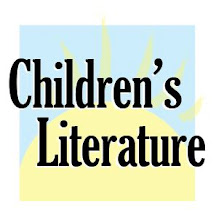But the reality does not disappoint. Appleseed, born John Chapman, did wear a pot on his head, and though he didn't gratuitously cast seeds onto anyone's land, he created nurseries of apple trees around the country and did not mind when customers couldn't pay for trees they bought on credit. He was probably too busy to collect, wandering the land more than any other businesspeople of his time, giving to charity, promoting the virtue of apples, and extolling peace between all things human and animal.
So when you're driving by an apple orchard in the Midwest of America, be glad to know that it is the heir of a tree planted by a genuine and stirring figure. These books introduce an important symbolic story to children. They variously tell the truth and the fiction of Johnny Appleseed.
Browse through this feature and those from previous years to discover more. http://www.childrenslit.com/childrenslit/th_appleseed.html
Johnny Appleseed: Select Good Seeds and Plant Them in Good Ground
Richard Worth
Part of the “Americans: The Spirit of a Nation” series, this is a very informative and useful reference for the middle grades to learn about legendary John Chapman. Born at the time of the American Revolution, John Chapman literally grew with the nation and became part of the westward movement. He was not the only nurseryman in this movement, but he was unique in his style and outlook. He preferred old, comfortable clothing and bare feet even in the winter, liked to sleep on the floor in front of the stove, and believed in gentleness with all living things. This gentleness extended to wasps, mosquitoes, and rattlesnakes and meant that he would rather plant seeds than use grafting, a process he considered to be violence against the tree. Add a little self-promotion and preaching and the reader can understand how the Johnny Appleseed legend developed. Included are numerous illustrations and sidebars, a table of contents, facts about apples, a chronology, footnotes, a glossary, book and Internet references, and an index. 2010, Enslow Publishers, $31.93. Ages 9 to 12. Reviewer: Sue Poduska (Children's Literature).ISBN: 9780766033528






No comments:
Post a Comment